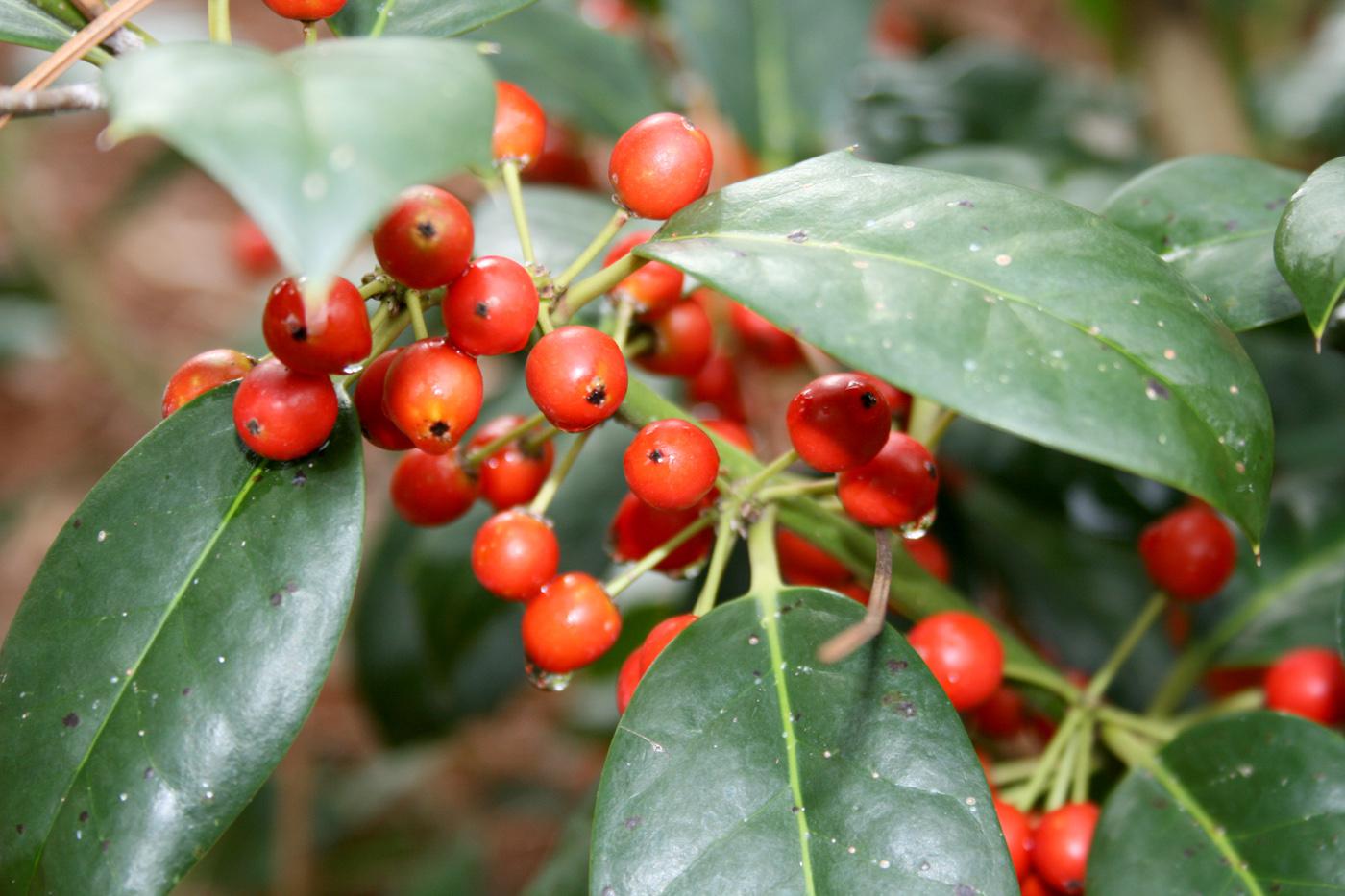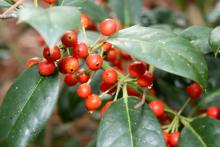Information Possibly Outdated
The information presented on this page was originally released on December 12, 2011. It may not be outdated, but please search our site for more current information. If you plan to quote or reference this information in a publication, please check with the Extension specialist or author before proceeding.
Winter berries bring cold weather color
When the weather outside is frightful and nothing is blooming, gardeners must rely on plant features other than flowers for color.
Plants that produce colorful berries can enhance the winter landscape. Mississippi gardeners are lucky because we have some real beauties to help shake up the winter landscape.
Pyracantha is a popular landscape plant that seems to drip with large numbers of orange to red berries hanging in heavy clusters. The berries sometimes seem to be on the interior of the plant because they are produced on last season’s growth. Training this shrub as an espalier, flat against a wall, is a popular growing method that shows off the berries.
Pyracantha’s common name is firethorn, and it certainly lives up to this name with sharp thorns found almost everywhere on the branches.
Other good landscape choices for berry production are the native hollies. These all have red berries, which makes them popular for Christmas wreath and garland decorations. Of all the native hollies, I think the yaupon holly has the most interesting berries.
The berries of the yaupon holly are a translucent red that give the impression of depth. The branches and stems are a bright gray color that provides a nice contrast to the berries. When I tell you the botanical name of yaupon holly is Ilex vomitoria, I think you can guess what native peoples used this plant for.
A hybrid holly that is a wintertime favorite is the Nellie R. Stevens. The leaves are a dark, glossy green year round, and it has a nice, triangular growth habit.
But the real attraction of the Nellie R. Stevens holly is its berry production. These bushes produce thousands and thousands of brightly colored red berries.
Nellie R. Stevens has the potential to be a big plant, growing up to 20 feet tall and 20 feet wide. It is a tough and durable plant that will accept pruning to keep it under control. But the best practice is to plant it in a space that can accommodate its full size and prune merely to maintain the pyramidal form.
As with all landscape plants, success begins with preparation. Always dig the planting hole at least twice as wide as the container or root ball, but always the same depth or a little shallower.
Research has shown that keeping the crown of the plant an inch or two above the ground surface gives the plant a great chance of survival in the landscape. Combine this with a 2-inch layer of mulch to conserve moisture, and your success is almost assured.
Besides adding beauty to our winter landscapes, plants that produce berries also play an important role as a winter food source for wildlife and a nesting habitat.








